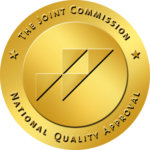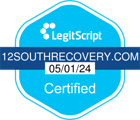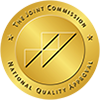Opioid addiction is a growing crisis affecting millions of people worldwide. Many turn to medication-assisted treatment (MAT) to help manage withdrawal symptoms and cravings. Suboxone is one of the most commonly prescribed medications for opioid addiction treatment. It plays a critical role in reducing opioid dependence and supporting long-term recovery. However, while it has benefits, there are also risks to consider. At 12 South Recovery, we provide addiction treatment that includes options like Suboxone when appropriate.

What is Suboxone?
Suboxone is a prescription medication specifically designed to aid individuals recovering from opioid addiction. It combines two active ingredients: buprenorphine, a partial opioid agonist that helps to alleviate cravings and withdrawal symptoms without producing the same euphoric effects as full opioids, and naloxone, an opioid antagonist that serves as a safeguard against misuse by triggering withdrawal symptoms if the medication is injected rather than taken as prescribed.
Unlike traditional opioid pain relievers, Suboxone does not create the same level of euphoria, making it a safer alternative for those in recovery. This feature reduces the likelihood of developing a new dependency while still addressing withdrawal symptoms effectively. By binding to opioid receptors in the brain, Suboxone provides enough stimulation to curb cravings and prevent the distressing symptoms of withdrawal, enabling individuals to focus on the emotional and psychological aspects of their recovery. When taken as part of a structured treatment plan that includes counseling and behavioral therapies, Suboxone can significantly improve an individual’s chances of achieving long-term sobriety. However, like any medication, it must be used under medical supervision to maximize its benefits while minimizing potential risks.
How Suboxone is Used to Treat Opioid Addiction
Induction Phase
The first step in using Suboxone for opioid addiction treatment is the induction phase. This phase begins when a patient has stopped using opioids and is already experiencing withdrawal symptoms. Starting Suboxone too soon can trigger precipitated withdrawal, a condition that causes severe and sudden withdrawal symptoms.
During the induction phase, a medical professional closely monitors the patient’s response to the medication, adjusting the dosage as necessary to ensure it effectively reduces withdrawal symptoms and cravings. This phase typically lasts a few days until the patient stabilizes.
Stabilization Phase
Once withdrawal symptoms are under control and the patient is no longer experiencing intense cravings, they enter the stabilization phase. This phase involves maintaining a consistent dose of Suboxone while integrating therapy and counseling into the treatment plan.
At this stage, the goal is to help the patient regain a sense of normalcy. With opioid cravings minimized, individuals can focus on rebuilding their lives, attending therapy sessions, and working on personal development without the constant urge to use opioids.
Maintenance Phase
For many patients, the maintenance phase lasts for an extended period, sometimes several months or even years. The goal of this phase is to continue suppressing cravings while allowing the patient to work through the underlying issues that contributed to their opioid addiction.
Therapy, support groups, and behavioral treatments become crucial during this time. Suboxone alone is not a cure for addiction—it is a tool that, when combined with therapy and a strong support system, can significantly improve long-term recovery outcomes.
Tapering Off Suboxone
While some patients remain on Suboxone long-term, others choose to gradually taper off the medication once they have developed the skills and coping mechanisms needed for a drug-free life. Tapering should always be done under medical supervision to prevent withdrawal symptoms and reduce the risk of relapse.
A customized tapering plan is designed based on each patient’s progress, ensuring a smooth transition off the medication while maintaining sobriety.
Suboxone Uses in Addiction Treatment
Suboxone is primarily used to manage opioid dependence. It is prescribed to individuals struggling with opioid withdrawal and cravings, allowing them to stabilize their condition and focus on recovery. Some of its primary uses include:
Reducing Withdrawal Symptoms
Opioid withdrawal can be severe, causing symptoms like nausea, sweating, anxiety, muscle pain, and intense cravings. These symptoms often push individuals to relapse, making it difficult to quit. Suboxone helps ease these symptoms, making the withdrawal process more manageable and reducing the risk of relapse.
Minimizing Cravings
One of the biggest challenges in overcoming opioid addiction is controlling cravings. Suboxone binds to opioid receptors in the brain, preventing other opioids from producing a high while still satisfying the brain’s need for opioid stimulation. This significantly lowers the risk of relapse and allows individuals to focus on recovery.
Providing a Safer Alternative
Unlike heroin, fentanyl, or other opioids, Suboxone has a ceiling effect, meaning it does not produce a high beyond a certain dose. This makes it a safer alternative for individuals in recovery, as it lowers the risk of overdose and dependency.
Allowing a Gradual Tapering Process
Many people need time to adjust to living without opioids. Suboxone helps patients gradually taper off opioids under medical supervision, reducing the likelihood of relapse.
Suboxone Risks and Potential Side Effects
While Suboxone is effective, it is not without risks. Patients considering this treatment should be aware of the following:
Physical Dependence and Withdrawal
Although Suboxone is less addictive than full opioids, long-term use can lead to physical dependence. Stopping the medication abruptly may cause withdrawal symptoms, including nausea, muscle aches, and mood swings.
Potential for Misuse
Suboxone is designed to deter misuse, but it is still an opioid-based medication. Some individuals may try to misuse it by taking higher doses than prescribed, which can be dangerous.
Side Effects
Common side effects of Suboxone include:
- Nausea and vomiting
- Headaches
- Drowsiness
- Dizziness
- Constipation
More severe reactions, such as difficulty breathing or allergic reactions, require immediate medical attention.
How 12 South Recovery Incorporates Suboxone into Treatment
At 12 South Recovery, we believe in comprehensive care that addresses both the physical and psychological aspects of addiction. Suboxone is just one tool in our treatment approach. Here’s how we integrate it into a broader recovery plan:
- Medical Evaluation and Supervision: Our medical team assesses each patient’s needs before prescribing Suboxone and provides ongoing supervision.
- Behavioral Therapy and Counseling: We pair Suboxone treatment with therapy to help individuals build coping strategies and address the root causes of addiction.
- Customized Treatment Plans: We tailor treatment plans to meet each patient’s unique needs, ensuring they receive the right combination of medical and psychological support.
- Gradual Tapering and Long-Term Support: For those who use Suboxone, we help create a plan for gradually reducing their dependence on the medication when they’re ready.
Contact Our Team
Suboxone is a valuable medication for treating opioid addiction, offering relief from withdrawal symptoms and reducing cravings. However, it comes with risks that require careful medical oversight. At 12 South Recovery, we incorporate Suboxone into personalized treatment plans, including medical care, therapy, and long-term support.
If you or a loved one is struggling with opioid addiction, contact 12 South Recovery today. Our team is here to help you take the next step toward lasting recovery.


















